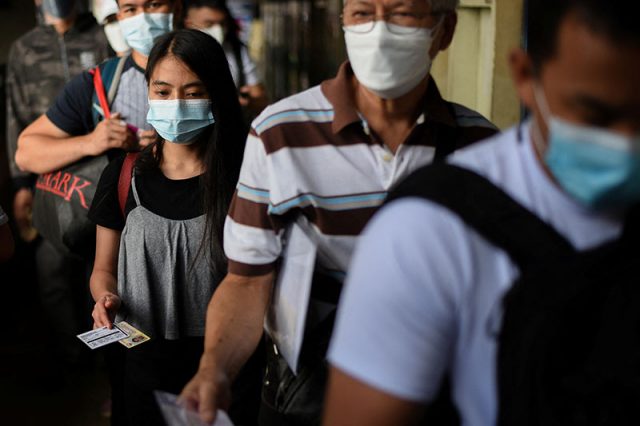
Filipinos are reminded that COVID-19 is still out there as the health department detected what is said to be the most transmissible subvariant in the global community so far.
The Department of Health on Tuesday announced that it has detected one case of the Omicron subvariant XBB.1.5 in the country, considered an offshoot of the Omicron XBB subvariant.
The DOH, citing the World Health Organization, said that data about the XBB.1.5 indicates it has “moderate-strength evidence for increased risk of transmission and immune escape.”
“However, currently available evidence for XBB.1.5 does not suggest any differences in disease severity and/or clinical manifestations compared to the original Omicron variant,” it added.
The detection came weeks after independent monitoring group OCTA Research warned of the subvariant possibly causing an uptick in COVID-19 cases as early as February.
“It’s XBB.1.5 that may be causing a new wave in other parts of the world,” OCTA Research fellow Fredegusto David said last January.
David Guido, another OCTA Research fellow, said that the country has a nationwide positivity rate of 1.2% as of February 6.
The positivity rate shows how many tested individuals were actually infected with COVID-19.
Despite the low figure, the public is still urged to be vigilant due to the XBB.1.5 subvariant’s characteristics.
“Yikes. [Covid] isn’t really over,” a Pinoy tweeted in response to the reports of its detection.
“‘Di ka pa rin tapos ‘no???” another Filipino tweeted.
Why is it concerning?
According to WHO technical lead Maria Van Kerkhove, the XBB.1.5 subvariant “is the most transmissible subvariant that has been detected yet.”
It is also included in WHO’s “Omicron subvariants under monitoring” list as of January 13.
In its latest risk assessment as of January 25, the international health agency has revised the confidence level of the risk assessment for XBB.1.5 from “low” to “moderate.”
“Based on its genetic characteristics and growth rate estimates, XBB.1.5 is likely to contribute to increases in case incidence globally,” WHO said in its report.
It added that the subvariant has been “increasing” in many regions of the United States.
“The prevalence of XBB.1.5 in some regions is predicted to be 80%, while in others, 20-50%,” the WHO said.
Apart from this, the subvariant “is shown to be as immune evasive as XBB.1, one of the Omicron subvariants with the highest immune escape to date.”
Van Kerkhove said that the WHO is “concerned about its growth advantage.” She added that the subvariant has mutations that allow it to attach to cells better and replicate easily.
The European Center for Disease Prevention and Control also tagged the subvariant as a “variant of interest,” a term used for variants in which evidence “could imply a significant impact on transmissibility, severity and/or immunity.”
Epidemiologist Eric Feigl-Ding called the XBB.1.5 a “super variant” and warned that it is “one of the most evasive variants against immunity.”
While the subvariant’s high transmissibility is being recognized, there is still no evidence that indicates it is more severe than other previous variants.
The WHO said that emerging variants pose danger since “they might evade previous immunity” one has acquired through COVID-19 vaccination or previous infection.
“As long as the virus continues to find people to infect, it will continue to evolve and become more difficult to contain,” it said in a video explainer.
The international health agency also said that COVID-19 continues to pose a public health threat since “10,000 people” continue to die from the viral disease every week.









